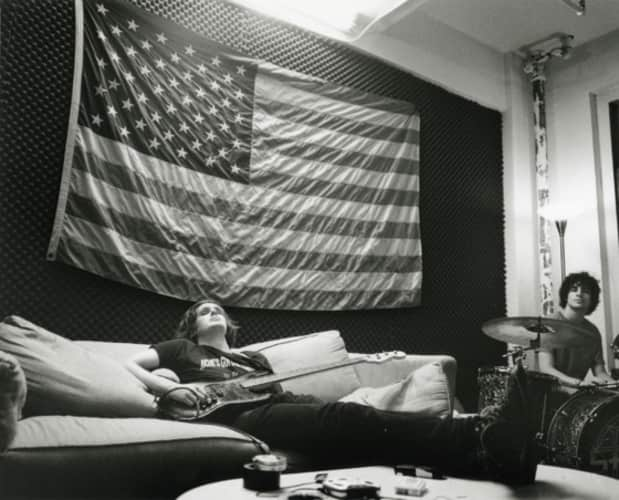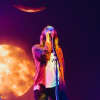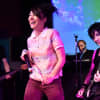Squabbles and footnotes aside, in the pages of history books and The FADER, New York rock in the 21st century began with the Strokes. Of course the Strokes always evoked New York rock of the 20th Century, but that was kind of the point. The band captured the city’s borrowed nostalgia for a time when young men wore tight jackets and let their hair fall into their faces, then wrote thrilling songs about the dejected glamour such lifestyle decisions would lead to. At the time of their arrival, downtown Manhattan was still stuck in the orange plastic/white vinyl hangover of lounge culture, but the Strokes were a band for dark bars where the bathroom door was always broken and you could sink into a booth and hide out from adulthood for a few more years. They were a great band for New York because no one could agree on them: they were either the best or the worst thing that could have happened. People would tell you they hated them and everything they stood for, then a couple of beers later they’d confide that they’d never actually heard them or that they secretly loved them. They were one more part of the city you could endlessly kvetch about, then take pride in because no other city had anything nearly as good.
I went to England for four days in the early summer of 2001 to write a piece for The FADER that would be the Strokes’ first cover story. The band hadn’t done many shows outside of New York before then—some opening dates for Doves and Guided by Voices, another brief trip across the Atlantic—and they were still learning to deal with life on the road. They hugged and bickered like brothers. They turned up the volume when they heard their song on the car stereo and took trips to HMV to see their EP at the listening stations. There were no rumblings of stifled creativity. There were no rumors of breakups. Their drinking wasn’t problematic yet, it was the point.

The band wrapped up their UK tour by playing a club in London called Heaven that was usually a gay disco. It was the most important show in their short career and they dazzled a crowd that had already decided they were in love with them. When they left the next day with rock & roll hopes pinned to their collars, they were on their way to Amsterdam. The plan was to take mushrooms and look at the hookers, a goofball adventure that seemed more post-college Eurotrip than needless hedonism. The Strokes spent the rest of their summer vacation touring the world, before returning in the fall of 2001 to a New York that would become a very different city. Two weeks after September 11th, they finally released Is This It, a 35-minute bender made for the jukeboxes of those same dingy, downtown bars they reawakened.
The Strokes were a great band for New York because no one could agree on them. People would tell you they hated them and everything they stood for, then a couple of beers later they’d confide that they’d never actually heard them or that they secretly loved them.
During the months that followed, in the midst of the mourning when everything was about “now more than ever,” the city’s young responded by hitting the streets even harder. Andrew WK’s “I Love NYC” took on new meaning, proclaiming: this is our town and we decide how we tear down the walls. Go ahead, smash yourself in the face with a brick. Get wet. Party ’til you puke.

There were more bands to put on your finest threadbare T-shirt and leave the apartment for. In Brooklyn, there was a thrashing group of liberal arts graduates called Yeah Yeah Yeahs whose lead singer Karen O wore insane outfits on stage when she wasn’t just wearing pasties, and who spit beer at the crowd when she wasn’t pouring it over her head. Yeah Yeah Yeahs usually did shows with Liars, a band that made experimental dance punk and had one song that was basically their towering Australian frontman Angus Andrews barking obtuse phrases over ESG’s classic “UFO.” If you were into ESG you would check out the Rapture, indie rock refuges from California and Washington DC who had holed up in an West Village studio with the DFA, a transcontinental production duo that pushed old Detroit house 12-inches on guitar bands like it was audio MDMA. The list went on: ARE Weapons, Radio 4, Interpol, Panthers, !!!, the Walkmen, the Moldy Peaches, the Secret Machines, the Witnesses, the French Kicks…and those were just New York outfits to keep track of. The EP was at Kim’s or they were playing an abandoned transmission repair shop in Bushwick. It was the year to be hated, and there were so many bands you had to check out.
Andrew WK’s “I Love NYC” took on new meaning, proclaiming: this is our town and we decide how we tear down the walls. Go ahead, smash yourself in the face with a brick. Get wet. Party ’til you puke.
By the summer of 2002 you could still spot Karen and Angus holding hands in Williamsburg or spend the day counting how many German tourists photographed the sign for the Bedford Ave subway stop, but the chase to find the Next Great New York Phenomenon had become draining and pointless. Groups that seemed to have had just five rehearsals and one gig were being championed like they invented amplification. In the quest to try to plant a flag on a band, the question changed from whether they were any good, to whether anyone else had done it yet. The tiger had caught his tail and eaten himself whole. While instant messaging one August afternoon, I asked an acquaintance if she was going to the destined-to-be-legendary Strokes and White Stripes show at Radio City Music Hall. She told me she had tickets, but probably wouldn’t be there. She said she’d rather see the Prosaics play at a record store in Brooklyn, and anyway, her “mom knew those bands.” Not long afterwards I left the city and the country. There were too many things that I had had enough of.

Over three months later and back in town on my way to California, I met up with the FADER editors for lunch. We were just getting into 2003 and they told me that New York rock was over. ARE Weapons were finally putting out their first album—much better and heartfelt than anyone could have predicted, but sure to be hated. The Walkmen’s “We’ve Been Had” was in a commercial for Saturn. The Rapture were going on the cover of the next issue, though as it turned out, their long-finished Echoes would still be stuck in the disco incubator for another nine months until the major label deal had been worked out. A new venue called Piano’s had opened on the Lower East Side, and everybody was already sick of it.
New York rock wasn’t really over, it just didn’t belong to the city any more. The best of the boroughs had risen up and were now out there for the rest of the world to pour over. Who knows how many seeds would be watered by Karen O’s video tears.
When thinking about that era now, the first memory that comes to mind doesn’t even take place in New York. It is in London, during the morning that was actually the afternoon after the Strokes show at Heaven—before they would become a touring band, perpetual headliners that never open for anyone besides idols like the Rolling Stones and Tom Petty. The gear was packed, the hotel bill was paid, and everyone had been recovered from whatever bed they slept in the night before. Talk turned to laundry and when they would finally get to do it. “I’m really starting to smell like a bum. An old, dirty bum,” said permanently good-natured drummer Fabrizio Moretti, holding the sleeve of his jacket to his nose to take in the layers of foreign smoke, booze, body odor, bus rides, shows and after parties that were already caked into its fabric. I took a whiff. He did.



